Panettone purists say chocolate and cherries are fine — just don't call it a panettone
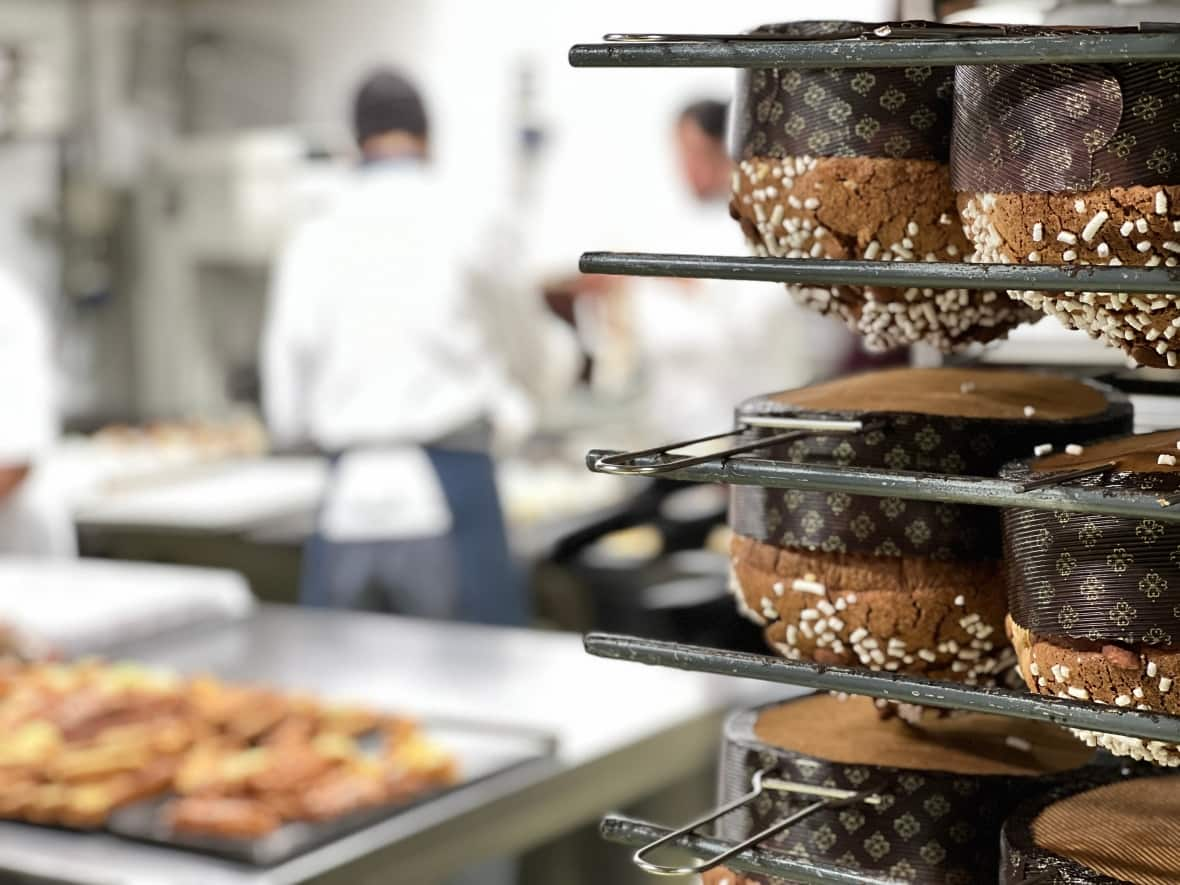
It's 4:30 a.m. in the brightly lit basement kitchen of the Pasticceria Walter Musco pastry shop in the south of Rome, and the arms of a large mixing machine are going full blast — pounding, twisting and stretching a huge blob of brown dough.
Young chefs dart around, poking their nose into the machine to check on the dough and measure ingredients soon to be added.
This is the final phase of the two- to three-day process involved in making panettone, the dome-shaped Italian sweet bread that has found a perennial place at Christmas tables around the world.
Producing panettoni (the plural ends with an "i"; the singular with an "e") is an elaborate affair. It begins with the rising and refreshing of the sourdough at its base, kneading and temperature checks that can last more than a day. Then the addition of sugar, butter, eggs, and — as per the traditional recipe — candied lemon, orange peel and raisins.
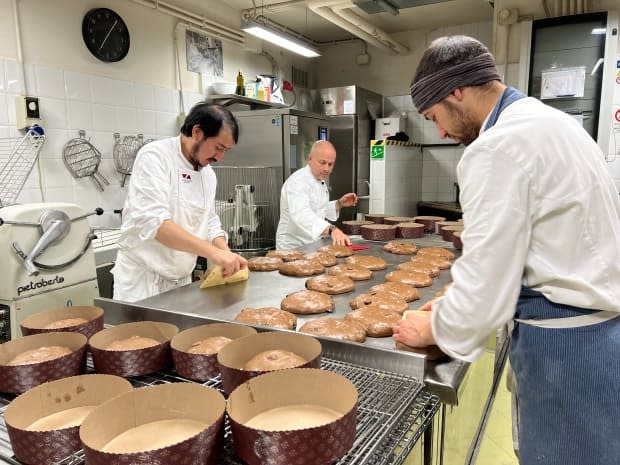
But this morning, award-winning pastry chef Musco oversees a chocolate version, pirlando, or rounding, the gleaming one-kilogram blobs of chocolate-studded dough, before plopping them into circular paper holders, ready for the oven.
"The main difference with the chocolate product is that the chips don't contain water, so its shelf-life is shorter than the ones with raisins and fruit peel," he explained.
When talking about the chocolate comestible, though, Musco is careful not to use the word panettone — reflecting an Italian scrupulousness regarding cuisine traditions.
"The product specification for the panettone is extremely strict," he said.
"The rules govern not only how the dough is made, but also what is 'suspended' inside. If you add anything other than raisins and candied citrus — even chocolate — you can no longer call it a panettone, but instead, a 'pastry product with yeast.'"
That's the party line, at any rate.
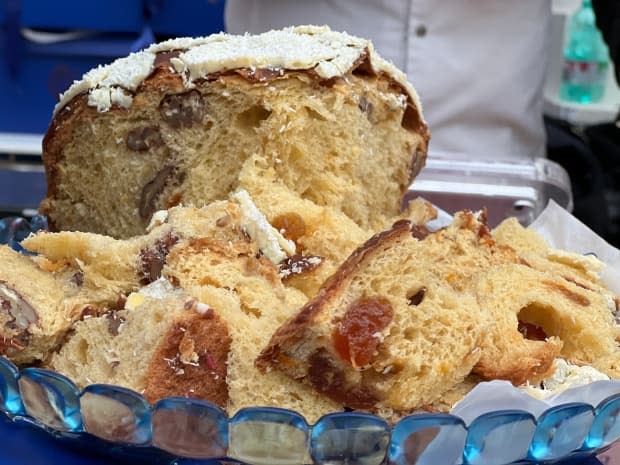
Musco's own sour cherry and poppyseed Christmas confection made La Repubblica national paper's top panettoni page in Rome this week. However, there were no fine print disclaimers that his and the others on the list, pictured oozing everything from raspberry sorbet and eggnog, to Madagascar bourbon, were mere "pastry products with yeast."
Don't get creative with the classics
Still, the importance of culinary nomenclature for Italians is never to be underestimated.
Italy has lobbied hard to have Denominazione di Origine Protetta (Protected Designation of Origin), or DOP, certification for products that are locally grown using traditional methods, for everything from its unique Parmesan cheese and prosciutto to balsamic vinegar.
And woe to non-Italians who think it might be fun to get creative with classic Italian dishes. Just ask the New York Times recipe writer who last year dared to suggest adding cherry tomatoes "to lend a bright tang" to carbonara.
"Icy shores and abundant ice floes aren't traditional on a tropical beach, but they lend a brilliant chill to this Caribbean getaway," was one of the less-withering Italian responses in a torrent of outrage on social media.
And pineapple on pizza? In Italy, don't even.
LISTEN | Megan Williams explores the doughy world of panettone with The Current:
Silvia Famà, editor of Cucina d'Italia, an Italian cooking and travel magazine that promotes made-in-Italy products, has launched a bid, with producers, for a Specialità Tradizionale Garantita (STG) classification for the Italian panettone, which is slightly wider than the DOP classification. But she complains producers have only recently understood the importance of rallying behind it.
In the meantime, South American cousins have moved in and dominated the global market with low-cost products.
"The biggest 'panettone' producer in the world isn't even Italian, but Brazilian. Bauducco, with 180,000 sales points around the world," she said. "The second-biggest global producer? D'Onofrio. Peruvian! We Italians need to wake up and start communicating the quality of what we have to offer."
'No glaze, no sugar pellets, no almonds'
So what does constitute a quality panettone?
"A good panettone shouldn't be too dry, should be well risen, not too heavy in your hands, pleasant when you eat it," said Marion Lichtle, a French award-winning pastry chef at Il Pagliaccio, a Michelin-starred restaurant in Rome. "You should feel the butter, but it shouldn't melt. Not sticky, but still a little wet inside the dough. Humid."
So, dry is bad, as anyone who's nibbled on a slice of panettone bought on sale just before its past-due-date and brought to the office party can attest.
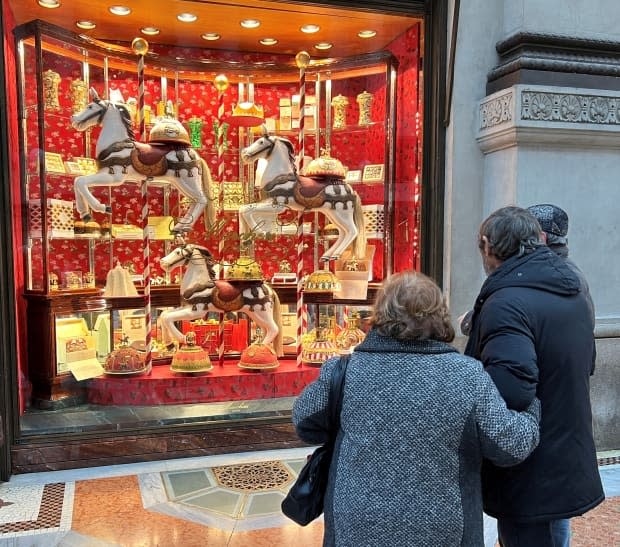
But apart from dry, what else makes a bad one?
"Sometimes the mistake is pastry chefs use too many aromas or flavours, instead of staying in the natural ingredients, or just adding vanilla, or making the candied fruit themselves," she said. "That's sad."
Pastry chef Gianluca Fusto is more categorical than dejected in his assessment of fake flavours. His judgment would effectively disqualify almost all panettone sold for less than $50.
"When you add artificial flavours like almond or orange, first, it's no longer a real panettone," said Fusto. "Second, it becomes an irritant in your mouth. You can taste it on your palette, a certain bitterness that you want to wash away with water. Chemical notes."
As a judge in the recent Panettone Maximo competition held in Rome, Fusto was roundly unimpressed with most of the 24 artisanal contenders, dismissing some outright after a concentrated close-up sniff.
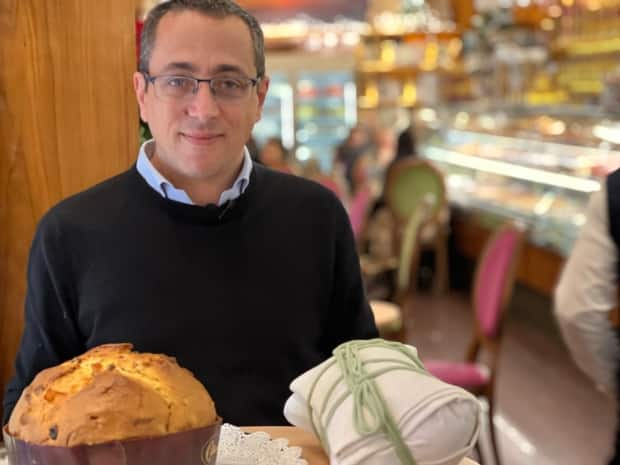
Giuseppe Gattullo, the third-generation owner of Pasticceria Gattullo in Milan, goes even further, saying the only real panettone is the Milan version, the traditional candied-citrus-and-raisin recipe — and nothing on top, save knife marks in the shape of a cross. No glaze, no sugar pellets, no almonds — the preferred crowning flourish of Turin, northern Italy. (That city's classic version is slightly lower and preferred over the Milan one by most central and southern Italian pastry chefs, who don't hold back on sugar.)
Gattullo emerges from the kitchen of his bustling pasticceria holding a white canvas package bound by a hospital-green cord. It is as heavy as a bag of sand and resembles a miniature mummy.
"This is the heart of our panettone, the mother yeast, created by my nonno, my grandfather, in 1961," he said, cradling the cloth package as one would a newborn. "When nonno was still alive, the refrigerator broke and the yeast almost died. It took a month of care to resuscitate it. For us, it's like a living soul."
'Bread of Toni' legend
Annalisa Cavalieri, a food anthropologist with the IULM University of Milan, says the concept of the yeast as a spirit or soul is deeply connected to Christmas.
"In the Christian religion, live yeast takes on a spiritual importance at Christmas time," said Cavalieri. "Keeping the yeast alive was linked to an ancient ritual of keeping hope alive for new life during the darkest part of the year. So eating something fermented or leavened is a way of keeping hope alive for spring and the return of light."
Historians say the first panettoni were made in Milan in the Middle Ages, a sweet bread consumed at Christmas by the wealthy few. The first written records — recipe ingredients and an entry into a Milanese-Italian dictionary, "panaton" — date to around the year 1600.
Like a lot of traditional dishes, folklore and legends have sprung up around it. The dominant panettone genesis story situates its yeasty birth inside the fortress of the powerful Sforza family that ruled Milan in the 1400s.
A pastry chef named Toni burnt dessert for a Christmas banquet, the story goes. In a scramble to make a replacement, he pulled together what he had on hand: butter, sugar, eggs, candied fruit and raisins, and his special sourdough. The result so pleased the Sforza family that they christened the sweet bread "Pane di Toni" — Bread of Toni. Pane-toni.
"It's just a legend," said Gattullo, with a laugh. "But what is irrefutable is that the panettone was born here in Milan."
For centuries it was a low-rise bread. Then, in the 1930s, it soared to commercial and literal new heights, when Milan pastry chef Angelo Motta's business scaled up production from artisanal to industrial.
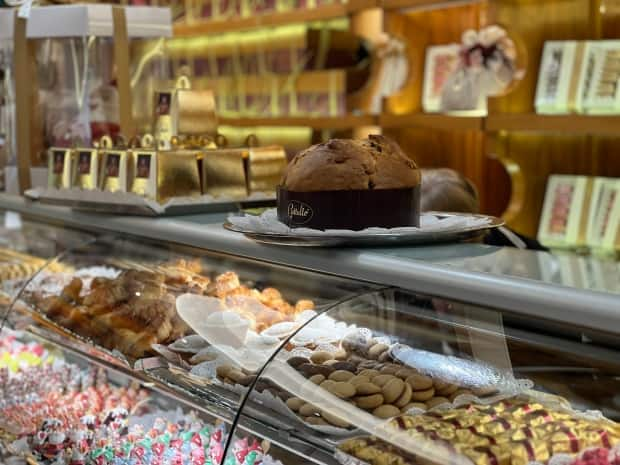
"The panettone we all know today was invented by Mr. Motta, of the now famous mass-produced brand," said Cavalieri. "They realized they could save a lot of space in the factory ovens by making them taller and skinnier, and that they would stack more efficiently."
Post-Second World War migration within Italy brought southern workers into northern bakeries and factories, where they learned the complicated process of making the sweet bread, say experts.
Decades later, they took that know-how back down south, injecting the panettone with local Rococo foofaraw and a glorious range of ingredients and flavours, which have proven popular everywhere from Rome to Regina.
Milan, with its raisins and citrus bits, may still be king of the classic panettone. But the genie is out of the box, decked with chocolate and cherries, dripping with pistachio glaze.


